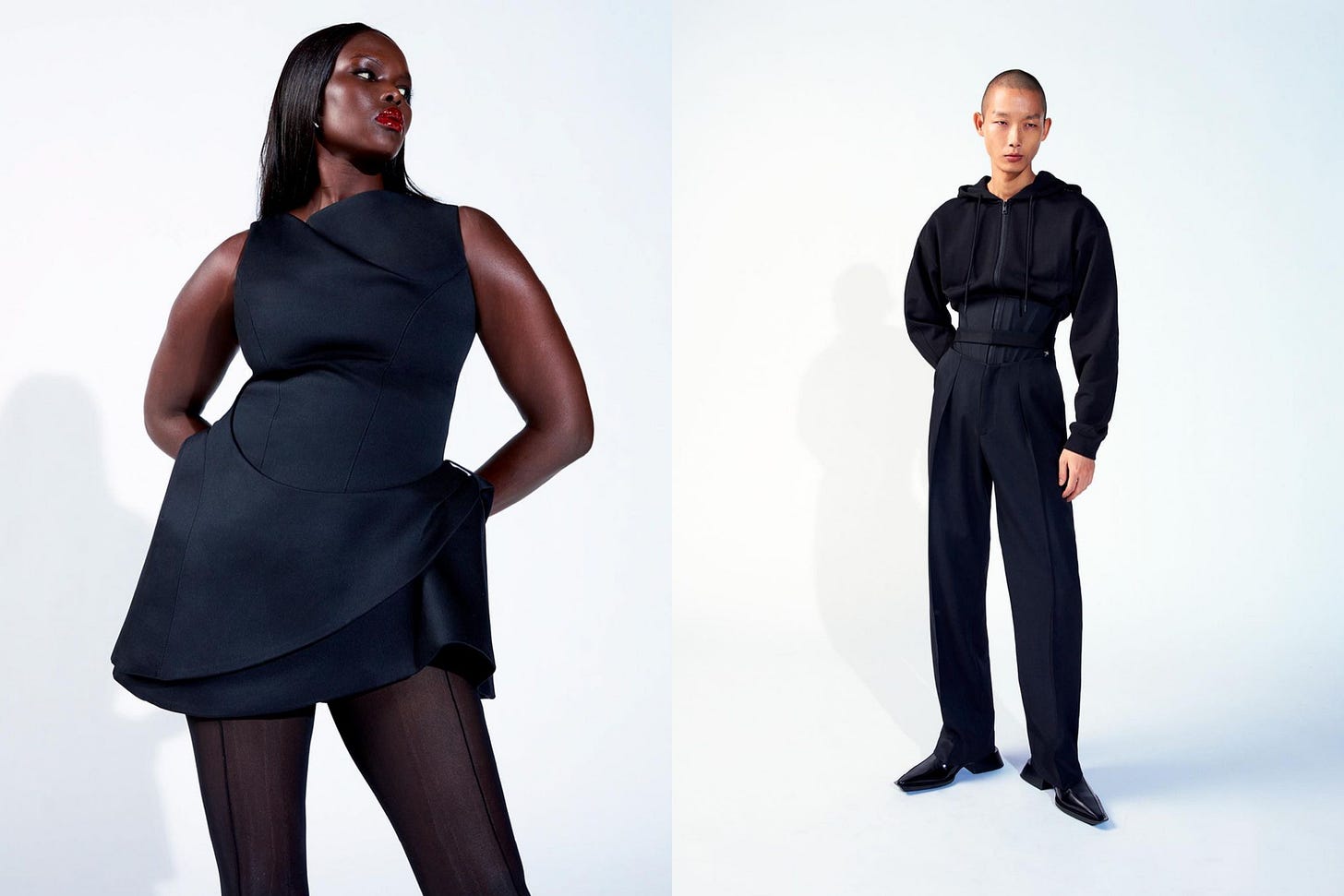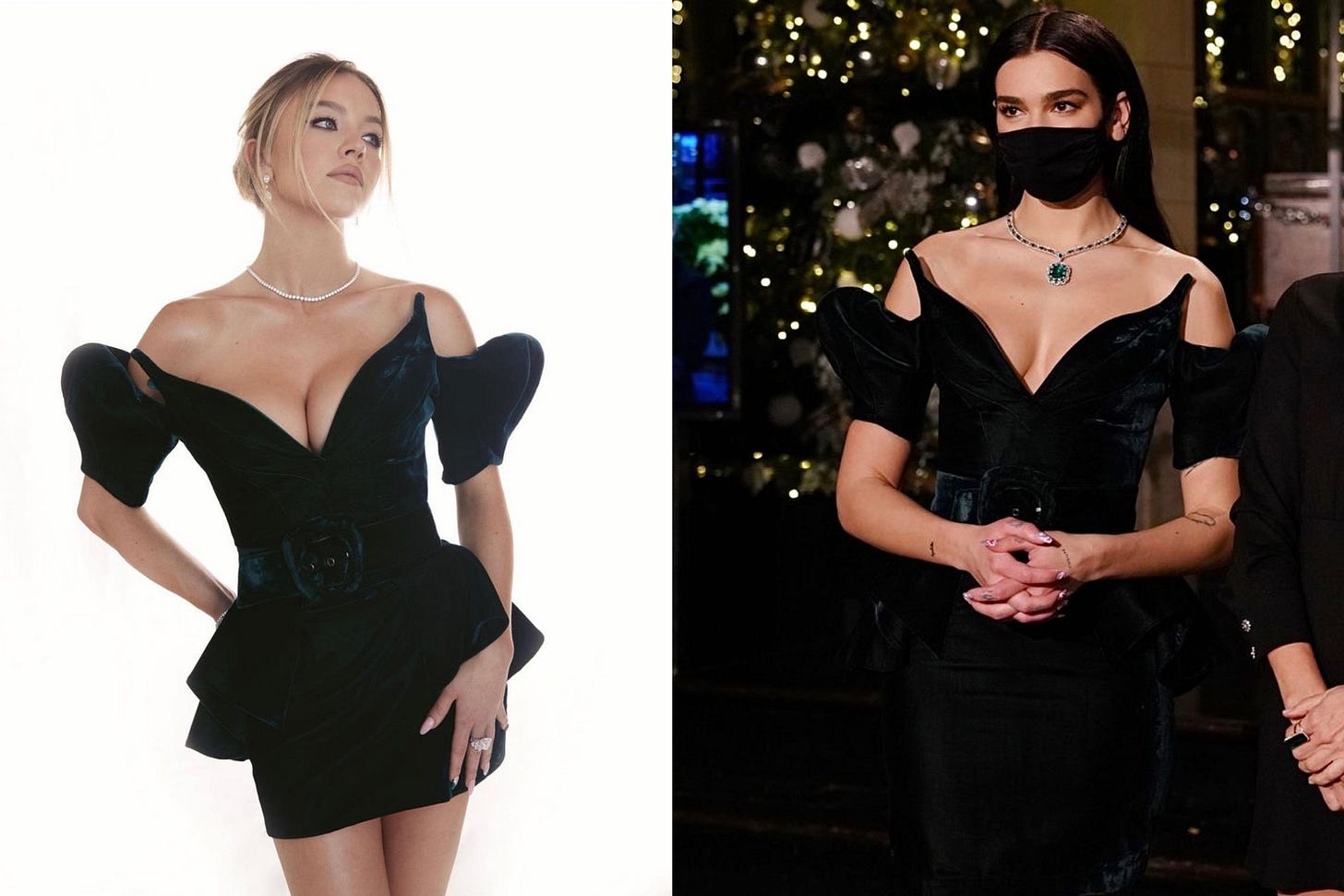The Rise of Dupe Culture: Luxury Brands Embrace Fast-Fashion Collaborations
Dupes to Delight: Exploring the Exciting World of Luxury Fast-Fashion Partnerships
Luxury brands used to hold their fast-fashion collaborations at arm’s length, but changing consumer attitudes and new financial incentives are changing the high-low game.
During a recent press event for the Mugler and H&M collaboration, Casey Cadwallader, the creative director of Mugler, made a noteworthy claim. He proudly stated, "We used a lot of the same materials [for the H&M collaboration], and we made them just as well as our own." The American-born creative director emphasized that the paneled denim and sheer corsetry from Mugler's premium line seamlessly transitioned, with minimal alterations, from his Paris atelier to a global chain store.
The key difference lies in the price range. The H&M pieces, available for sale starting Thursday, range from $49.99 to $749. In contrast, the original Mugler pieces start at $470 and reach up to $2800 on Net-a-Porter. For instance, a copy of the label's iconic velvet "Vampire Dress" from 1981, worn by celebrities like Dua Lipa and Sydney Sweeney, will be sold for $449 at H&M, while the authentic version is listed at $18,000 on 1stdibs.com
This marks the new era of high-low collaborations, where luxury houses willingly embrace TikTok's "dupe culture." Previously, designers approached such partnerships cautiously, offering a taste of their brand's DNA to fashion enthusiasts while benefiting from a cash injection and global advertising platform. They hoped that the association with affordable garments wouldn't negatively impact their prestigious reputation.
Luxury labels now openly embrace duplicating their own iconic designs. The shifting attitude towards dupes and the immense exposure offered by fast-fashion partnerships have contributed to this change. Moreover, creative directors gain the opportunity to approve the production of items and even entire categories that their current label doesn't offer.
For example, during the shooting of the H&M collection, Cadwallader recalls his design team noticing the striking resemblance to their own designs. The declining stigma around duplications and the allure of increased visibility have made luxury brands more comfortable with this approach. In return for replicating their coveted pieces, creative directors gain the freedom to introduce new items and categories.
Victor Glemaud, who had contemplated eyewear prior to collaborations, seized the chance to create eyewear pieces for Target in 2020. The collaboration proved highly successful, leading Glemaud to secure a licensing deal with Tura for his opticals and sunglasses. This segment now constitutes a significant portion of his revenue, serving as proof of concept for his subsequent eyewear deal.
How have these collaborations evolved over time?
H&M pioneered high-low partnerships in 2004, teaming up with Karl Lagerfeld for a collection of streamlined suits and little black dresses. Target followed suit with collaborations with **Isaac Mizrahi**in in 2003 and Proenza Schouler in 2007, later featuring a collaboration with Kenzo led by Humberto Leon and Carol Lim. Initially, the concept involved reinterpreting past designs for a quick thrill, with direct copies discouraged. However, Thakoon's 2008 Target line caused controversy due to its close resemblance to the designer's higher-priced pieces. Despite the criticism, the collaboration was successful and was even reintroduced in 2019. Bonnie Morrison, a marketing advisor, explains that while referencing past collections was acceptable, outright copying was feared as it could alienate customers.
Today, the rules surrounding collaborations have become more flexible. Collaborations with mainstream brands have become so commonplace that they are often embraced by the designer's fanbase, but may go unnoticed by the general public. The quality of dupe products has also improved, with consumers able to afford designer pieces from outlet sites and secondhand markets as well as high-quality, albeit legally questionable, counterfeit items. However, it's important to note that owning a genuine designer piece provides a sensory and aesthetic experience that mass retailers cannot fully replicate. Fashion enthusiasts and industry insiders can easily distinguish between authentic and diffusion pieces, with social media editors even spotting duplicate items listed on resale platforms without proper attribution.
What do designer brands gain from these collaborations?
For certain designer brands, fast-fashion chains and large retailers serve as patrons, elevating new talents by providing opportunities for enhanced skills and exposure. For instance, Cadwallader, the designer at Mugler, faced limitations in his regular collection due to insufficient consumer interest. He highlighted a teal leather trench coat showcased in the runway show, which, despite its high Mugler price, sold fewer than 10 units and had to be canceled. However, Cadwallader produced the coat for H&M, making it the priciest item in the collaboration at $749. Additionally, he used the H&M collaboration to venture into menswear, an area not currently explored by Mugler. The appeal of H&M's sophisticated and global supply chain was also significant, even for a brand like Mugler renowned for its cut-and-sew techniques. Cadwallader expressed admiration for H&M's ability to embellish Lycra with closely spaced, large crystals, creating a decadent and beautiful effect. The collaboration also enabled the mass production of body chains, previously limited to the runway. H&M employed 3D sketching to better understand and create more complex products for the collaboration.
Is there still a market for traditional high-low collaborations?
Luxury veterans like Morrison find value in partnering with global chain stores like H&M to enhance brand visibility and attract new customers. Collaborations provide a targeted opportunity to expand one's network and gain a stronger foothold in consumer culture without losing the interest of loyal brand fans. Some emerging designers take advantage of high-low collaborations to completely deconstruct their aesthetic. For example, Olivia Cheng, founder of Dauphinette, known for chainmail daisy dresses and baguette-inspired purses, used her J.Crew capsule collection to showcase her versatility by incorporating vibrant sketches of strawberry gardens and carrot roots into everyday clothing and accessories. This collaboration not only broadened her understanding of swimwear but also deepened her expertise in catering to resort and pre-fall customers. Cheng is open to future collaborations, acknowledging the growth opportunities they provide.
The rise of dupe culture and the embrace of fast-fashion collaborations by luxury brands have reshaped the high-low game. Once cautious, luxury houses now openly duplicate their iconic designs, benefiting from increased visibility and the opportunity to introduce new items. These collaborations serve as patrons, offering enhanced skills, exposure, and market penetration. While discerning consumers can still distinguish between authentic and diffusion pieces, the fashion industry recognizes the value of these partnerships in expanding networks and retaining loyal fans. The evolving landscape of high-low collaborations accommodates the changing dynamics of consumer culture and fosters creativity, innovation, and growth in the industry. By embracing dupe culture, luxury brands have tapped into a new avenue for expression and business expansion, blurring the boundaries between luxury and affordability. This convergence shapes the future of fashion, heralding an era of democratized style.







